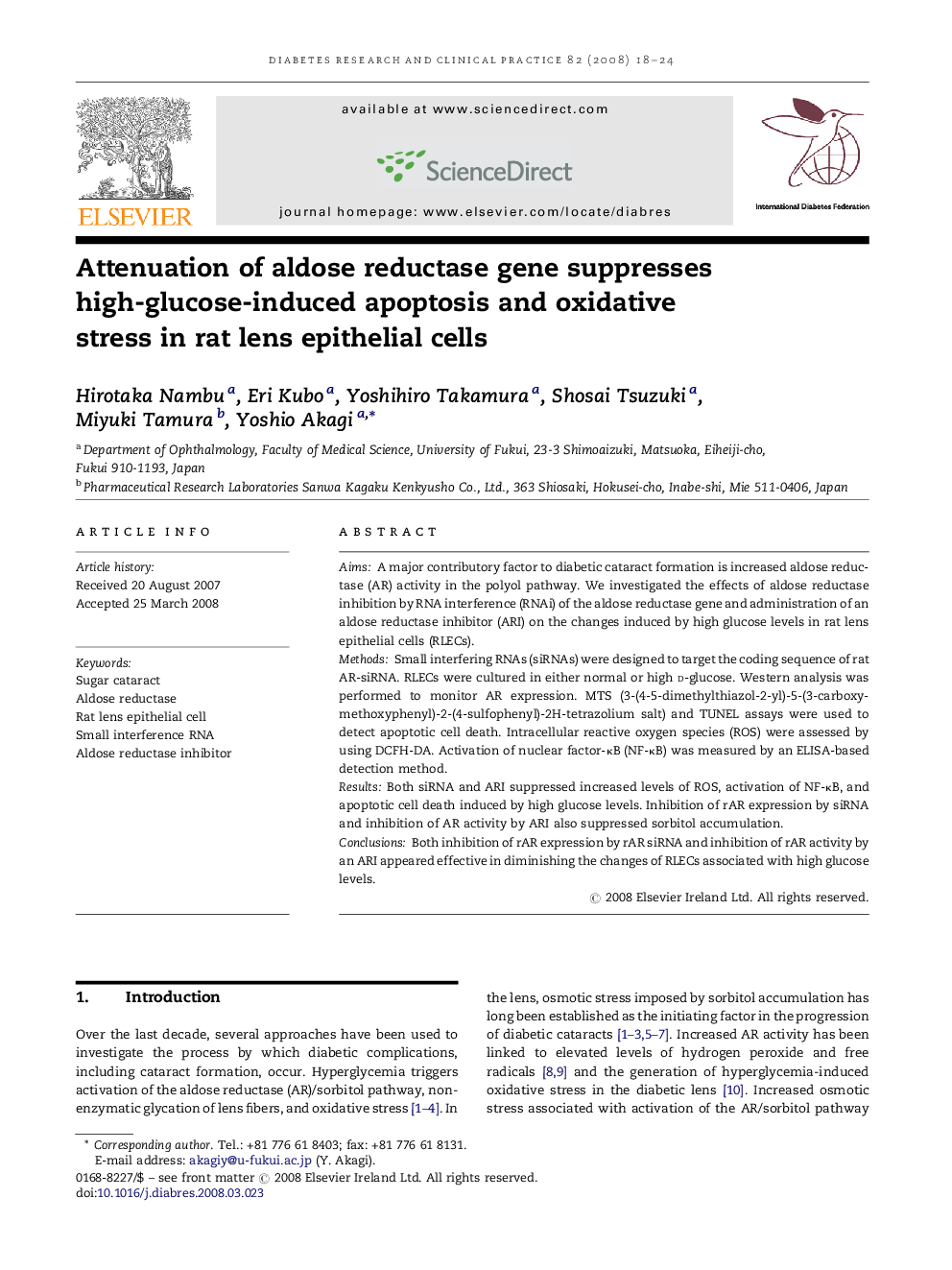| Article ID | Journal | Published Year | Pages | File Type |
|---|---|---|---|---|
| 2798272 | Diabetes Research and Clinical Practice | 2008 | 7 Pages |
AimsA major contributory factor to diabetic cataract formation is increased aldose reductase (AR) activity in the polyol pathway. We investigated the effects of aldose reductase inhibition by RNA interference (RNAi) of the aldose reductase gene and administration of an aldose reductase inhibitor (ARI) on the changes induced by high glucose levels in rat lens epithelial cells (RLECs).MethodsSmall interfering RNAs (siRNAs) were designed to target the coding sequence of rat AR-siRNA. RLECs were cultured in either normal or high d-glucose. Western analysis was performed to monitor AR expression. MTS (3-(4-5-dimethylthiazol-2-yl)-5-(3-carboxymethoxyphenyl)-2-(4-sulfophenyl)-2H-tetrazolium salt) and TUNEL assays were used to detect apoptotic cell death. Intracellular reactive oxygen species (ROS) were assessed by using DCFH-DA. Activation of nuclear factor-κB (NF-κB) was measured by an ELISA-based detection method.ResultsBoth siRNA and ARI suppressed increased levels of ROS, activation of NF-κB, and apoptotic cell death induced by high glucose levels. Inhibition of rAR expression by siRNA and inhibition of AR activity by ARI also suppressed sorbitol accumulation.ConclusionsBoth inhibition of rAR expression by rAR siRNA and inhibition of rAR activity by an ARI appeared effective in diminishing the changes of RLECs associated with high glucose levels.
